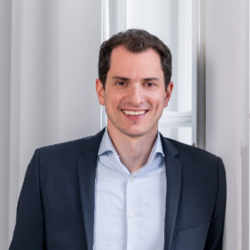Réorientation des achats pour une compagnie aérienne de premier plan
Our client is an airline that is suffering from strong price competition in the industry. In order to return to profitability, the company initiated an extensive cost-cutting programme to reduce costs by a total of 15 per cent over three years.
Logistique et infrastructure

Objective
The airline’s procurement function is responsible for indirect commodity groups, which account for approximately 1/3 of the total purchasing volume. The Airport, Operations and Maintenance departments purchased independently. The goal of our joint project was to professionalise procurement and achieve savings across all areas. We supported our client in this over the course of a year.
Our client is an airline that is suffering from strong price competition in the industry. In order to return to profitability, the company initiated an extensive cost-cutting programme to reduce costs by a total of 15 per cent over three years.
Procedure
Consistent demand management and qualification of employees:
Due to the high pressure on results, we worked with procurement to develop hypotheses for potential savings. In workshops, we identified initiatives with the departments in which « quick wins » could be realised that directly contributed to the annual result. The list of agreed initiatives grew continuously and so did the savings pipeline. Key levers were cost transparency and consistent avoidance of over-specification and inefficient processes.
Through the active role of procurement and additional capacity of professional procurement expertise, successful lighthouse initiatives were quickly implemented together with the departments.
Within the framework of demand management, we first recorded the requirements that were actually needed and created new specifications for a large part of the purchased requirements. For example, we answered the question of how the baggage determination process can be further automated and which service centre is best used depending on customer concerns. Based on these specifications, we then conducted classic tenders and negotiations for some product groups. For a large part of the requirements, e.g. for crew hotels, we relied on the advantages of auctions in order to achieve better conditions.
In the area of ground operations, the challenge was to achieve savings despite rising wage costs on the market. We started by achieving transparency about the cost structures of the suppliers within the framework of supplier workshops and market analyses.
We carried out extensive target costing analyses in which we determined all individual cost components in order to identify further optimization potential.
For the requirements in the area of maintenance, we developed new standardised procurement processes together with the customer team, e.g. in order to reduce the manual effort in the procurement of spare parts through the consistent use of online platforms for tenders and ordering processes.
In order to sustainably anchor the new methods and tools in the company, we carried out a comprehensive coaching and training programme in parallel, in which not only the procurement staff participated, but also those responsible from the other purchasing departments.
The trainings were conducted by our INVERTO Training Centre. The basics of the strategic procurement process and category management were refreshed and know-how on supplier research and professional tender management was imparted. The buyers were also given a comprehensive procurement tool box with methods along the procurement process. The area of Supplier Performance Management was newly established and professional structures for supplier management introduced.
A new, joint savings pipeline and an overarching purchasing calendar have contributed to a significant and sustainable strengthening of the cooperation between the purchasing departments. Thus, not least through procurement, the turnaround in the company’s ability to operate profitably despite high price pressure could be brought about.

Results
- Reputation of procurement as a value driver in the company increased
- Savings of a multi-digit million amount – savings targets exceeded by >25 percent
- Transparency of cost structure through improved cross-functional cooperation
- Streamlining of operational procurement processes
- Introduction of demand management processes and supplier management
- Further development of procurement through the introduction of new methods and trainings
Meet our logistics and infrastructure expert
